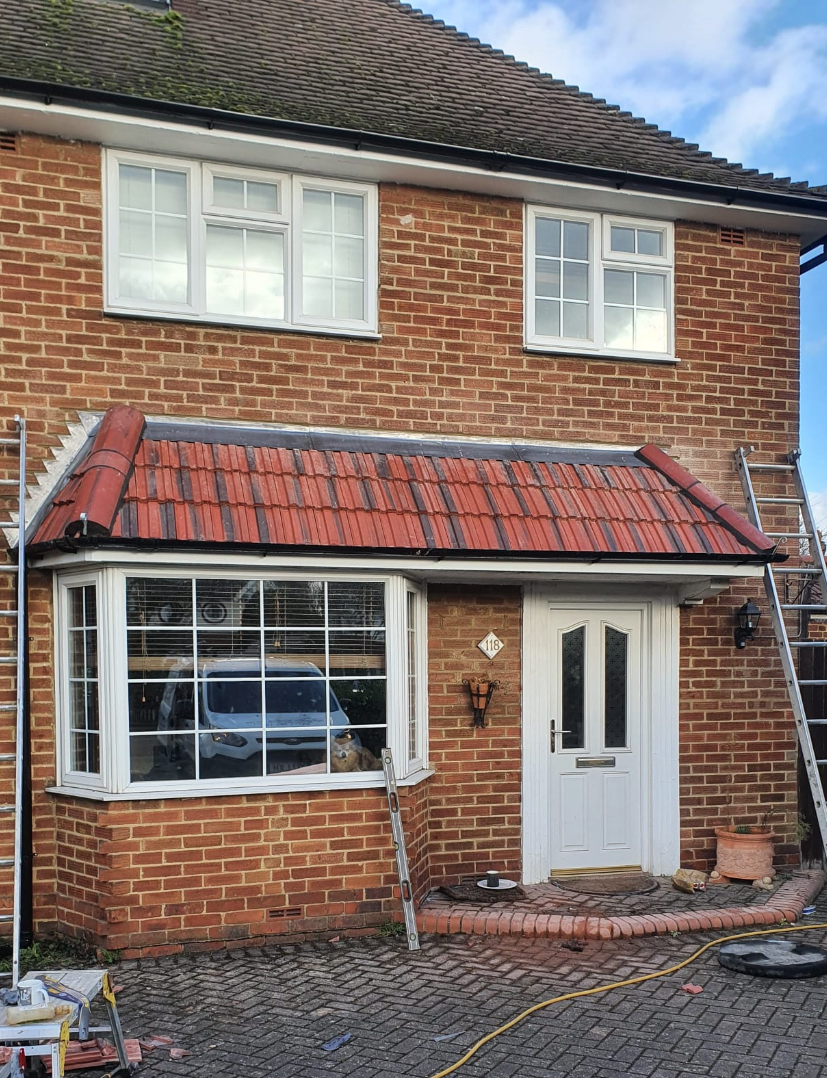+44 7853 968135
Does house insurance cover roof repairs?
House insurance coverage for roof repairs depends entirely on the cause of the damage and your specific policy terms. Most standard home insurance policies will cover roof repairs when damage results from sudden, unforeseen events like storms, fires, or falling trees, but they typically exclude gradual wear and tear or maintenance issues.
Understanding your policy’s specific coverage terms is crucial because roof repairs can cost thousands of pounds, and knowing what’s covered could save you significant financial stress. The distinction between accidental damage and general maintenance often determines whether your claim will be successful, making it essential to review your policy documents carefully.
Can You Claim on House Insurance for Roof Repairs?
You can successfully claim on house insurance for roof repairs, but only when the damage meets your policy’s specific criteria for covered perils. Insurance companies typically approve claims for roof damage caused by storms, hail, fire, vandalism, or impact from falling objects, provided the damage occurred suddenly and wasn’t preventable through regular maintenance.
The claims process requires you to document the damage thoroughly with photographs and obtain professional assessments from qualified roofers or surveyors. Most insurers will send their own loss adjusters to inspect the damage and verify that it falls within your policy’s coverage terms before approving any repair costs.
Your success rate for roof repair claims improves significantly when you can demonstrate that the damage resulted from a specific insured event rather than gradual deterioration. Keep detailed records of your roof’s maintenance history, as insurers often use poor maintenance as grounds for claim rejection, particularly for older properties where wear and tear becomes more apparent.
Need some Support with your Roof Repairs? Speak with a member of our Professional Roof Replairs Team here

How Does Home Insurance Work on a Roof?
Home insurance operates on your roof through a system of covered perils and exclusions that determine when repair costs will be reimbursed. Your policy will typically list specific events that trigger coverage, such as storm damage with winds exceeding certain speeds, while explicitly excluding damage from neglect, poor installation, or normal aging processes.
The insurance assessment process begins when you report roof damage, with insurers evaluating whether the cause falls within covered perils and whether you’ve maintained adequate care of your property. Most policies include a buildings insurance component that covers structural elements like roofs, but the excess amount and coverage limits will affect your final payout amount.
Different types of roofing materials and ages can influence how your insurance responds to claims, with newer roofs often receiving more favourable treatment than older installations. Insurers may also consider your property’s location and exposure to weather risks when determining coverage terms and premium costs for roof-related protection.
Who Pays for Roof Repairs?
Coverage Scenarios and Financial Responsibility
| Repair Type | Cost Range | Timeframe | Complexity |
|---|---|---|---|
| Tile replacement | £100-£300 | 1-2 days | Low |
| Slate repairs | £200-£600 | 1-3 days | Medium |
| Flat roof patching | £150-£400 | 1-2 days | Medium |
| Chimney repairs | £300-£1,500 | 2-5 days | High |
| Full roof replacement | £5,000-£15,000 | 1-2 weeks | Very high |
| Emergency leak repairs | £200-£800 | Same day | Medium |
The financial responsibility for roof repairs shifts between you and your insurance company depending on the underlying cause of the damage. When damage results from insured perils like storms or fires, your insurance company bears the cost after you pay the policy excess, but you remain responsible for maintenance-related issues and gradual deterioration.
Landlords and tenants have different responsibilities, with landlords typically maintaining buildings insurance that covers structural roof repairs while tenants focus on contents insurance for their belongings. The UK government’s guidance on landlord responsibilities clarifies that landlords must maintain the property’s structure, including the roof, regardless of insurance coverage.
For shared ownership or leasehold properties, the responsibility often lies with the freeholder or management company who should maintain buildings insurance covering communal areas including roofs. Understanding these arrangements prevents disputes and ensures repairs proceed quickly when damage occurs.
How Much Does a Roofer Charge for Repairs?
Average UK Roof Repair Costs by Type
| Repair Type | Cost Range | Timeframe | Complexity |
|---|---|---|---|
| Tile replacement | £100-£300 | 1-2 days | Low |
| Slate repairs | £200-£600 | 1-3 days | Medium |
| Flat roof patching | £150-£400 | 1-2 days | Medium |
| Chimney repairs | £300-£1,500 | 2-5 days | High |
| Full roof replacement | £5,000-£15,000 | 1-2 weeks | Very high |
| Emergency leak repairs | £200-£800 | Same day | Medium |
Roofer charges for repairs vary significantly across the UK, with emergency callouts typically costing £200-£800 depending on the complexity and urgency of the work required. Standard repairs like replacing individual tiles or fixing minor leaks generally range from £100-£600, while major structural work can reach several thousand pounds.
Regional variations affect pricing considerably, with London and South East England commanding premium rates compared to other areas of the country. The Trading Standards guidance provides valuable resources for finding reputable contractors and understanding fair pricing structures for roofing work.
Obtaining multiple quotes remains essential for both insurance claims and private repairs, as significant price variations exist between contractors. Emergency repairs often carry premium pricing, but addressing leaks quickly prevents more extensive damage that could result in higher overall costs and potential insurance complications.
Understanding House Insurance Coverage for Roof Repairs
Successfully navigating house insurance for roof repairs requires understanding the delicate balance between covered perils and policy exclusions that determine your financial protection. Most homeowners discover that their insurance provides robust protection against sudden, accidental damage while leaving them responsible for preventive maintenance and gradual deterioration costs.
The key to maximising your insurance benefits lies in maintaining detailed records of your roof’s condition and addressing minor issues before they escalate into major problems. Regular professional inspections and prompt repairs of small issues demonstrate responsible ownership and strengthen your position when legitimate claims arise from unexpected events.
Your insurance relationship with roof repairs ultimately depends on proactive communication with your insurer and thorough understanding of your policy terms. Here are the essential points to remember:
Need Help with Repairing your Roof? Talk to one of our Roof Repair Experts today!
Does House Insurance Cover Roof Repairs: Frequently Asked Questions
House insurance generally covers roof damage caused by sudden, unforeseen events such as storms, fires, falling trees, vandalism, or impact damage from flying debris. Coverage excludes gradual wear and tear, poor maintenance, or damage resulting from neglect or inadequate repairs over time.
Most insurance policies require you to report roof damage “as soon as reasonably possible” after discovery, typically within 30 days of the incident. Delayed reporting can complicate your claim or potentially void coverage, so contact your insurer immediately upon discovering damage.
Yes, most policies include coverage for reasonable temporary repairs to prevent additional damage, such as emergency tarping or basic waterproofing measures. Keep all receipts and photographs of temporary work, as these costs are typically reimbursable under your policy’s emergency provisions.
Insurance companies may reduce your settlement or deny claims if pre-existing poor maintenance contributed to the damage extent. They distinguish between damage that would have occurred regardless of roof condition versus damage exacerbated by neglect or wear.
While insurers may recommend preferred contractors, you typically have the right to choose your own qualified roofer for repairs. However, using non-approved contractors may require additional documentation and could affect the claims process timeline.
Older roofs may face more scrutiny during claims assessment, with insurers more likely to attribute damage to wear and tear rather than covered perils. Some policies include depreciation factors that reduce payouts for roofs beyond certain ages, typically 10-20 years.
Essential documentation includes photographs of damage, professional contractor assessments, proof of regular maintenance, weather reports confirming storm conditions, and detailed repair estimates. Comprehensive documentation significantly improves claim approval chances and processing speed.
Damage from a neighbour’s tree typically falls under your own insurance initially, though your insurer may pursue recovery from the neighbour’s liability insurance if negligence is proven. The UK government’s guidance on neighbour disputes provides additional information about property damage responsibilities.
Filing legitimate claims for sudden, accidental damage typically has minimal impact on premiums, especially for first-time claims. However, multiple claims within short periods or claims involving maintenance issues may result in premium increases or policy restrictions.
Buildings insurance covers the roof structure itself and resulting damage to fixed features, while contents insurance protects belongings damaged by roof leaks or collapse. Most roof repair costs fall under buildings insurance, which landlords typically maintain while tenants focus on contents coverage.
Storm damage typically requires wind speeds exceeding specific thresholds (usually 55+ mph) recorded by meteorological services in your area. Insurance companies verify storm conditions through weather data, making it important to check official records when filing storm-related claims.
Insurance companies typically pay for “like-for-like” replacement using similar materials and specifications to your original roof. Upgrades to premium materials require additional personal payment for the difference in cost between standard and enhanced options.
Begin by requesting detailed written explanation of the denial reasons, then gather additional evidence addressing their concerns. You can appeal through your insurer’s complaints procedure, seek independent professional assessments, or contact the Financial Ombudsman Service for dispute resolution.
The Wikipedia page for roof maintenance provides comprehensive information about different roofing systems and maintenance requirements that insurance companies consider when assessing claims. Understanding these requirements helps maintain coverage eligibility and prevents claim disputes.

